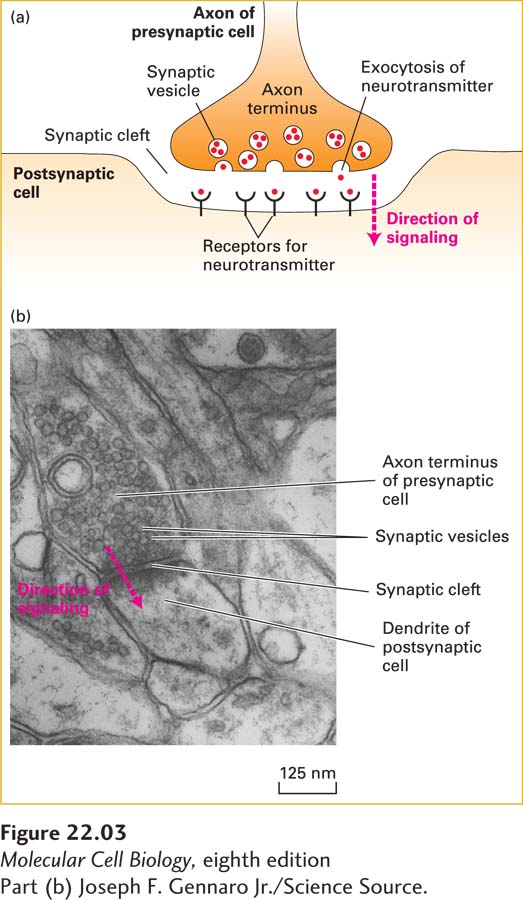
FIGURE 22- 3 A chemical synapse. (a) A narrow region— the synaptic cleft— separates the plasma membranes of the presynaptic and postsynaptic cells. Arrival of action potentials in a presynaptic cell causes exocytosis at a synapse of a small number of synaptic vesicles, releasing their content of neurotransmitters (red circles). Following their diffusion across the synaptic cleft, the neurotransmitters bind to specific receptors on the plasma membrane of the postsynaptic cell. These signals either depolarize the postsynaptic membrane (making the potential inside less negative), tending to induce an action potential in the cell, or hyperpolarize the postsynaptic membrane (making the potential inside more negative), inhibiting action potential induction. (b) Electron micrograph showing a dendrite synapsing with an axon terminus filled with synaptic vesicles. In the synaptic region, the plasma membrane of the presynaptic cell is specialized for vesicle exocytosis; synaptic vesicles containing a neurotransmitter are clustered in these regions. The opposing membrane of the postsynaptic cell (in this case, a neuron) contains receptors for the neurotransmitter.
[Part (b) Joseph F. Gennaro Jr./Science Source.]
[Leave] [Close]